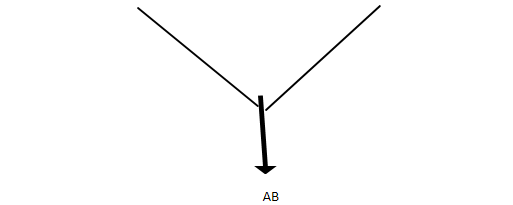Question
Question: A man with A blood group marries a woman with B blood group and both show the presence of homozygous...
A man with A blood group marries a woman with B blood group and both show the presence of homozygous alleles. The possible genotypes of the offsprings would be
I. Type A
II. Type B
III.Type O
IV. Type AB
(a)II only
(b)I and II
(c)I, II, and IV
(d)I, II, III, and IV
(e)IV only
Solution
Human blood group system has two antigens A and B. Their production is governed by the gene I which exists in three allelic forms, namely IA, IB, and IO. IA and IB are codominant to each other, but both are dominant over IO. When a person with Blood group A has homozygous alleles i.e. (IAIA) and a person with blood group B has homozygous alleles (IBIB).
Complete answer:
When IA is present in homozygous (IAIA) or heterozygous (IAIO), antigen A would be produced and the blood group would be A. Similarly when IB is present in homozygous or heterozygous condition antigen B would be produced and the blood group will be B. When IO is present in the homozygous condition, no antigen would be produced and the blood group will be O. Here the person with Blood group A has homozygous alleles i.e. (IAIA) and the person with blood group B have homozygous alleles (IBIB). So, the resulting offsprings will have blood group AB.
P1-A group (IAIA) B group(IBIB)
G- IA IB

Additional Information: -Human ABO blood group system provides an excellent example of multiple allelism.
-A blood group contains antigen A and antibody b. B blood group has antigen B and 'a' antibody.
-AB group has antigens A and B, but no antibodies. O blood group has antibodies a and b, but no antigens.
So, the correct answer is ‘IV only’
Note: In 1900, the Austrian physician Karl Landsteiner discovered two kinds of antigens and their antibodies. The antigens were termed A and B, and the antibodies a and b. These antibodies are not acquired but are constitutive or natural, present in blood as natural constituents.
-Antigens occur in the plasma membrane of RBCs, and antibodies in blood plasma. He could also realize that a particular type of blood may contain either one or both or none of these antigens and antibodies.
